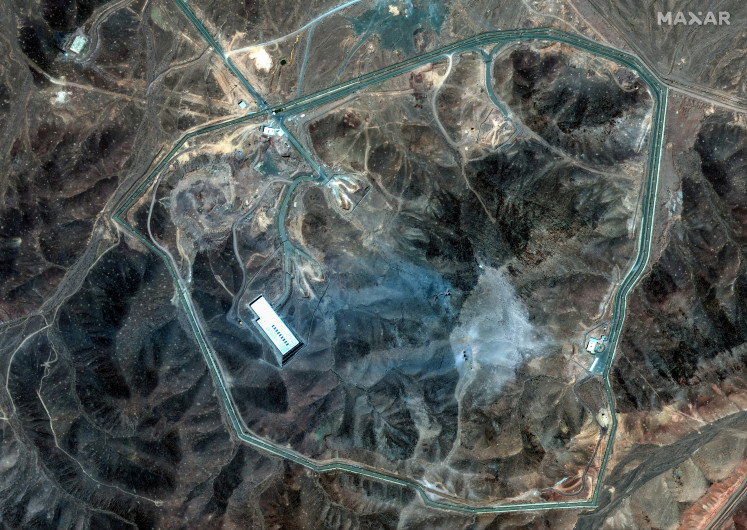Popular Reads
Top Results
Can't find what you're looking for?
View all search resultsPopular Reads
Top Results
Can't find what you're looking for?
View all search resultsGiant ape, elephant fossils found in Tegal
The Yogyakarta Archeological Center recently discovered two rare animal fossils in the form of an ancient pygmy elephant (stegedon) and an ancient giant ape in Semedo village, Kedungbanteng district, Tegal regency, Central Java
Change text size
Gift Premium Articles
to Anyone

T
he Yogyakarta Archeological Center recently discovered two rare animal fossils in the form of an ancient pygmy elephant (stegedon) and an ancient giant ape in Semedo village, Kedungbanteng district, Tegal regency, Central Java.
The two fossils are regarded as key findings and are considered to be the fossils of previously undetected animals.
Yogyakarta Archeological Center curator Siswanto said during a public lecture at Jenderal Soedirman University in Purwokerto that the fossils were found within a year.
The pygmy elephant fossil was found in 2013 and the ape fossil was found this year.
'Both findings are important because after conducting further identification, the pygmy elephant was part of an endemic fauna species of Semedo, so we gave it the scientific name of stegodon semedoensis,' said Siswanto on Monday.
According to him, the name was based on scientific reasons. Based on analysis, the elephant fossil is included in the Stegodontidae family.
He said the teeth had reached adulthood and were part of a representative finding at the site in Java, which had never been found elsewhere. Analysis showed the pygmy elephant had small teeth and a lower jaw.
'On the finding of giant ape fossils, we have analyzed two teeth that were still attached in the jaw of the ape's skull,' he said.
Siswanto said the giant ape fossil was similar to fossils usually found in China and on the Chinese-Vietnamese and Chinese-Indian borders.
He said the finding of fossils of a giant ape, which was estimated to be as tall as 3 meters, was proof the animals had spread to Java.
He said the fossil of the giant ape was found in a soil layer and was a million years old, the same age as the fossils of giant apes found in China and Vietnam.
He said researchers had predicted that giant apes had migrated from China to Java a million years ago when China, Kalimantan and Java were still on the same landmass.









